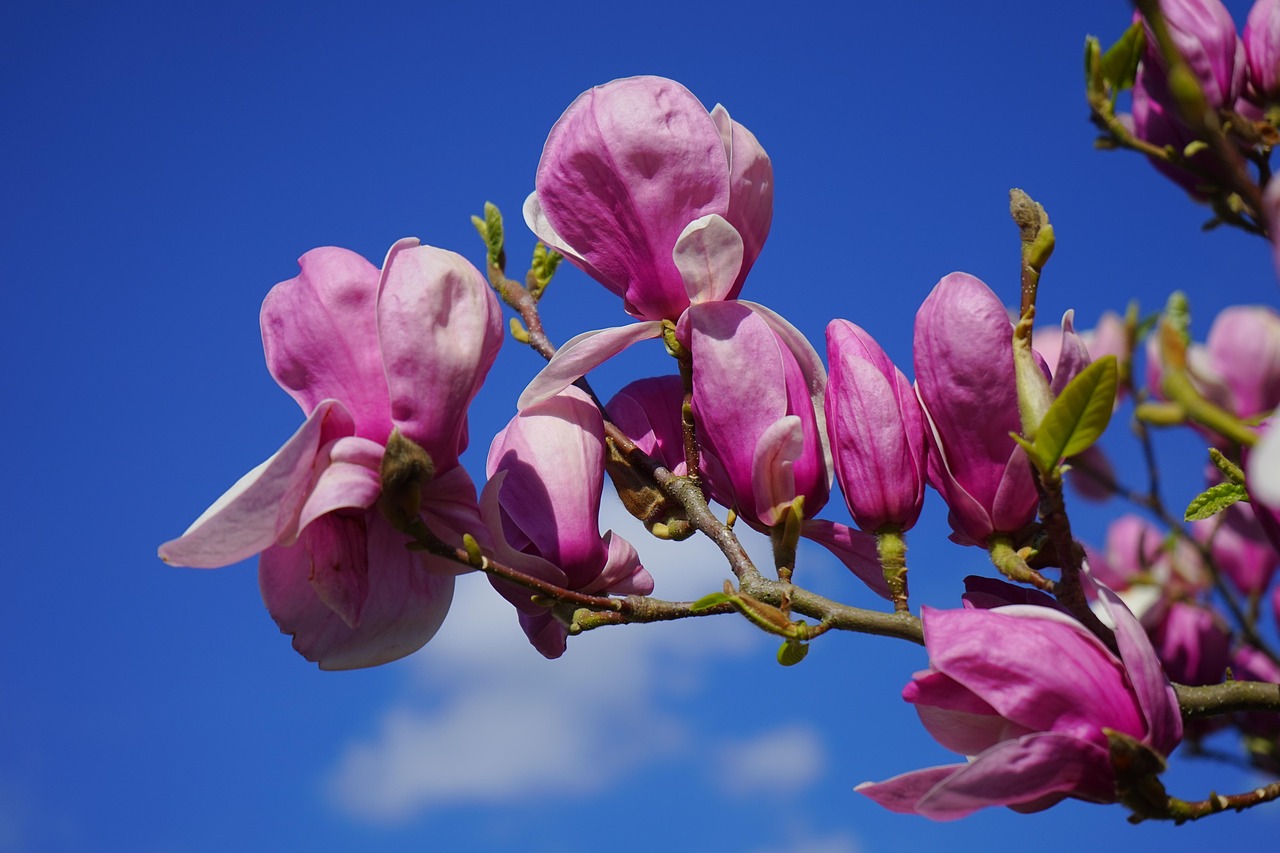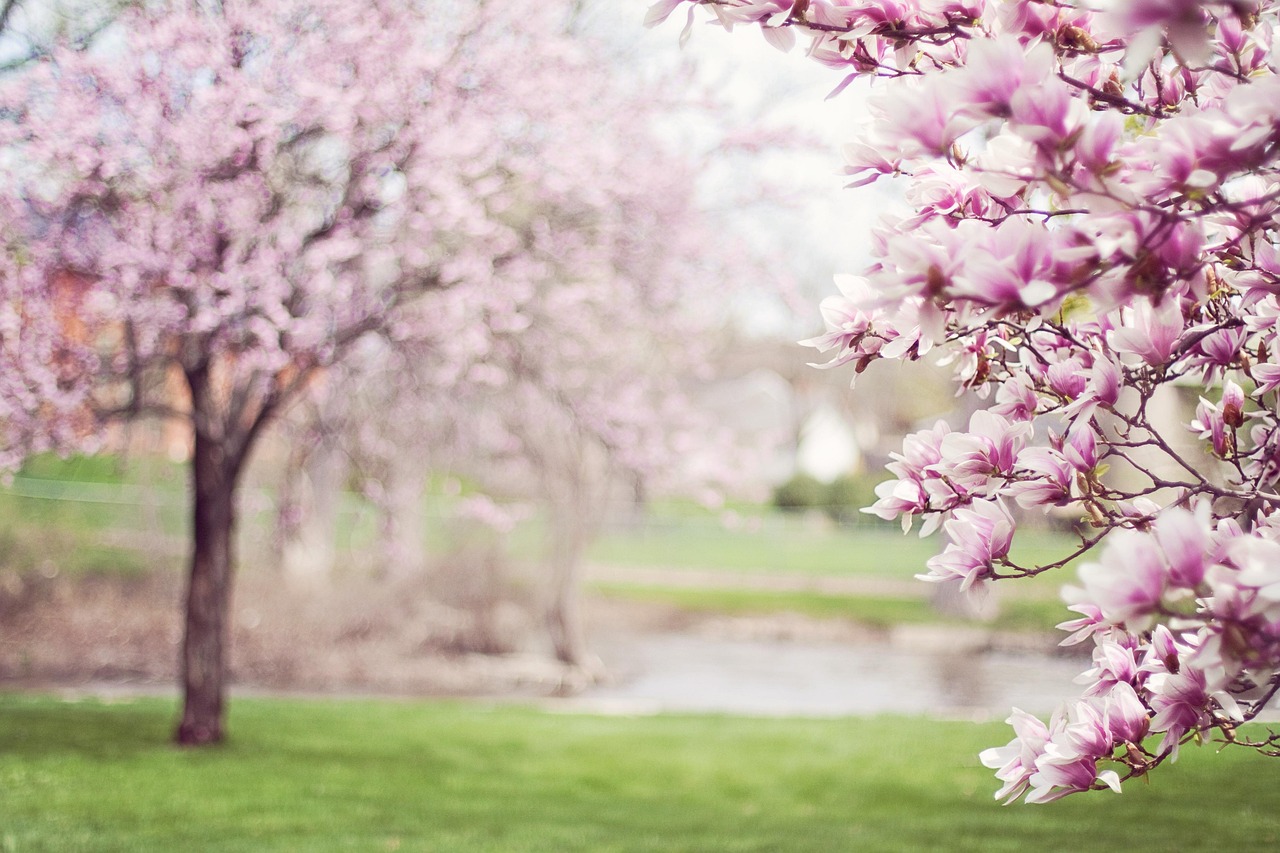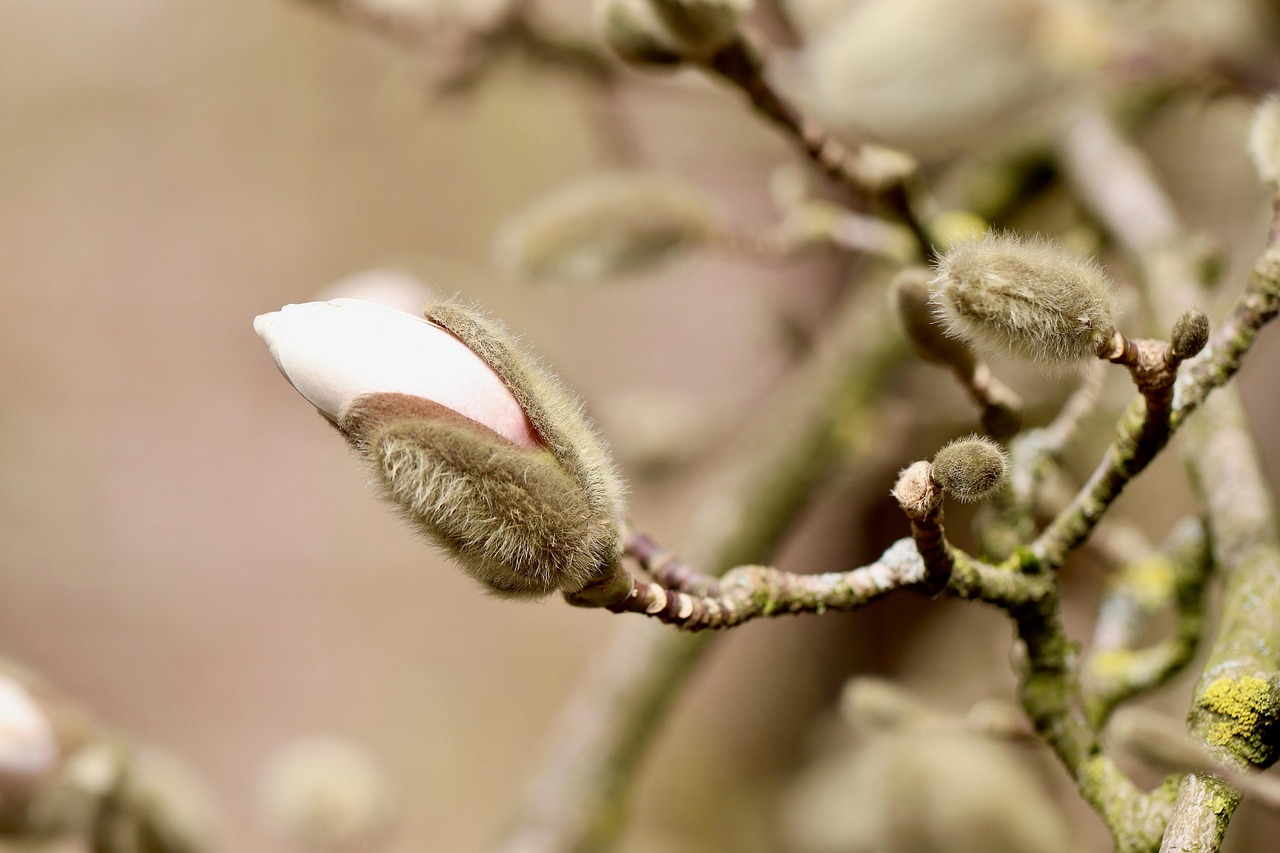Yes, magnolia trees can survive winter, but their ability to thrive depends on the specific species and the care they receive. Protecting them from harsh cold and frost is essential to ensure their health during the winter months.
Understanding Magnolia Trees

Magnolia trees are renowned for their stunning flowers and lush foliage. These deciduous or evergreen trees belong to the Magnoliaceae family and are native to both North America and Asia. Their striking blooms are often among the first to appear in spring, making them a favorite among gardeners.
While magnolias are typically hardy, their survival during winter can pose challenges. Understanding which species you have and their specific needs is crucial for proper winter care. Some magnolias thrive in colder climates, while others prefer milder winters.
Types of Magnolia Trees
There are several species of magnolia trees, and each has different cold tolerance levels. Here are some common types:
- Southern Magnolia (Magnolia grandiflora): Known for its large, fragrant white flowers, this evergreen variety is suitable for warmer climates.
- Star Magnolia (Magnolia stellata): A smaller, deciduous tree that can tolerate some cold, blooming early in spring.
- Cucumber Tree (Magnolia acuminata): This tall tree is hardy and can withstand colder temperatures, making it suitable for northern regions.
- Saucer Magnolia (Magnolia x soulangeana): Popular for its large flowers, this hybrid is moderately hardy and can survive in various climates.
Cold Hardiness Zones
Before planting a magnolia tree or caring for an existing one, it is important to know the cold hardiness zone of your region. The USDA Plant Hardiness Zone Map categorizes areas based on average annual minimum winter temperatures. Here is a brief overview:
| Zone | Average Minimum Temperature (°F) | Common Magnolia Species |
|---|---|---|
| 5 | -20 to -10 | Cucumber Tree, Star Magnolia |
| 6 | -10 to 0 | Saucer Magnolia, Star Magnolia |
| 7 | 0 to 10 | Southern Magnolia |
| 8 | 10 to 20 | Southern Magnolia |
Winter Care Tips for Magnolia Trees
Caring for magnolia trees during the winter months is essential to ensure their survival and health. Here are some effective tips:
1. Mulching
Applying a thick layer of mulch around the base of the tree helps insulate the roots from freezing temperatures. Use organic materials like wood chips or straw, maintaining a width of at least three inches. Ensure the mulch does not touch the trunk to prevent rot.
2. Watering Before Winter
Proper hydration is critical before winter sets in. Water your magnolia tree thoroughly in late fall. This helps the tree store enough moisture to withstand dry winter air.
3. Protecting from Wind
Strong winds can be damaging during winter. If your magnolia tree is young or particularly vulnerable, consider using windbreaks. Planting evergreen hedges or installing temporary barriers can shield your tree from harsh gusts.
4. Wrapping Young Trees
Younger magnolia trees may benefit from wrapping their trunks with burlap or protective tree wrap. This helps shield them from extreme temperatures and prevents damage from ice and snow buildup.
5. Pruning Considerations
Avoid heavy pruning in late fall or winter. Pruning can stimulate new growth that may not survive the cold. Instead, focus on removing only dead or damaged branches before winter begins.
By implementing these care tips, you can help ensure that your magnolia trees remain healthy and vibrant through the winter months. Understanding their needs will allow you to enjoy their beauty year after year.
Signs of Winter Stress in Magnolia Trees
Recognizing the signs of winter stress in magnolia trees is crucial for timely intervention. Cold weather can lead to various issues that may affect the overall health of your tree. Understanding these signs can help you take appropriate action to protect your magnolia.
Identifying Symptoms
Here are some common indicators that your magnolia tree may be experiencing winter stress:
- Browning Leaves: Leaves turning brown before the onset of spring can indicate cold damage, especially if they are young or newly emerged.
- Wilting or Drooping: If branches appear limp or drooping, this may suggest that the tree is not receiving adequate moisture.
- Cracked Bark: Extreme temperature fluctuations can cause bark to crack, exposing the tree to pests and diseases.
- Delayed Bud Break: If buds fail to break dormancy in the spring, it may be a sign of winter stress or root damage.
What to Do When You Notice Stress
If you observe any of these symptoms, consider taking the following actions:
- Assess Water Needs: Ensure that your tree is adequately watered, especially if winter temperatures have been unusually dry.
- Examine the Root Zone: Check for any signs of frost damage or soil issues around the root zone that may be affecting water uptake.
- Apply Fertilizer Sparingly: In spring, use a balanced fertilizer to help encourage recovery, but avoid over-fertilization as it can stress the tree further.
Common Pests and Diseases During Winter
Magnolia trees can be susceptible to a range of pests and diseases during the winter months. Being aware of these threats can help you take preventative measures to safeguard your trees.
Pests to Watch For
Some common pests that may affect magnolia trees include:
- Scale Insects: These tiny insects attach themselves to the bark and can cause significant damage by sucking sap from the tree.
- Aphids: Aphids can also infest magnolias, leading to wilting and curling leaves as they feed on plant sap.
- Spider Mites: These pests thrive in dry conditions and can weaken the tree by feeding on its foliage.
Diseases That May Occur
In addition to pests, certain diseases can pose a threat during winter:
- Crown Gall: This bacterial infection creates galls on roots and stems, which can hinder nutrient uptake.
- Powdery Mildew: A fungal disease that appears as white powdery spots on leaves, often exacerbated by poor air circulation.
- Botrytis Blight: This fungal disease can cause flower blight, particularly in damp conditions during late winter or early spring.
Preparing Your Magnolia for Spring
As winter comes to an end, it’s essential to prepare your magnolia tree for the upcoming spring season. Proper preparation will ensure that your tree remains healthy and vibrant as it emerges from dormancy.
Spring Pruning Tips
Once the threat of frost has passed, pruning can be beneficial. However, timing is critical. Here are some tips for effective spring pruning:
- Timing: Prune in late winter or early spring before new growth begins. This allows for better visibility of the tree’s structure.
- Remove Deadwood: Focus on cutting away any dead or damaged branches to promote healthy growth.
- Avoid Heavy Pruning: Limit heavy pruning as it can stress the tree. Instead, concentrate on shaping and maintenance.
Nourishing Your Tree
Your magnolia tree will benefit from a nutrient boost as it prepares for growth:
- Add Organic Matter: Incorporate compost or well-rotted manure into the soil around your tree to improve nutrient availability.
- Use a Balanced Fertilizer: Apply a slow-release, balanced fertilizer in early spring to support new growth without overwhelming the tree.

Monitoring Environmental Conditions
As spring approaches, keep an eye on environmental conditions that may affect your magnolia tree:
- Soil Moisture: Monitor soil moisture levels to ensure your tree is getting enough water, especially during dry spells.
- Pest Monitoring: Begin inspecting for pests and take action early to prevent infestations.
By staying vigilant and attentive to your magnolia’s needs throughout winter and into spring, you can help ensure its health and beauty in the seasons ahead.
Choosing the Right Magnolia for Your Climate
S

electing the appropriate magnolia species for your specific climate is crucial for ensuring their survival through the winter months. Different magnolia varieties have unique characteristics that make them more or less suitable for specific hardiness zones.
Factors to Consider
When choosing a magnolia tree, consider the following factors:
- Climate Resilience: Some magnolias are more resilient to cold temperatures than others. Always check the hardiness zone of the variety you are considering.
- Growth Habit: Different species have varying growth habits, from large trees to smaller shrubs. Consider the space available in your garden.
- Flowering Time: Some magnolias bloom earlier in the spring than others, which can be important for avoiding late frost damage.
- Soil Preferences: Certain magnolia species prefer well-drained acidic soils, while others can tolerate a wider range of soil conditions.
Recommended Magnolia Varieties for Cold Climates
If you live in a colder region, here are some magnolia species that are known for their hardiness:
- Star Magnolia (Magnolia stellata): This small tree is hardy in zones 4 to 8 and produces fragrant white flowers in early spring.
- Cucumber Tree (Magnolia acuminata): Known for its tall stature and yellow-green flowers, this tree is suitable for zones 4 to 8.
- Saucer Magnolia (Magnolia x soulangeana): A hybrid that blooms early, it thrives in zones 5 to 8 and is popular for its large, showy flowers.
The Importance of Soil Health
The health of your magnolia tree is closely linked to the quality of the soil in which it grows. Healthy soil provides essential nutrients and supports root development, helping your magnolia thrive even during challenging weather conditions.
Soil Testing
Before planting or caring for your magnolia tree, consider conducting a soil test. This will help you understand the pH and nutrient levels present in your soil. Here’s how to get started:
- Collect Samples: Use a clean tool to gather soil samples from different areas around where you plan to plant your tree.
- Send Samples for Testing: Many local extension services offer soil testing. Follow their instructions for submission and wait for results.
- Analyze Results: Look at the pH and nutrient levels to determine if you need to amend the soil before planting your magnolia.
Improving Soil Health
If your soil test indicates deficiencies or poor drainage, consider these methods to improve soil health:
- Add Organic Matter: Incorporate compost or well-rotted manure to enhance nutrient content and improve soil structure.
- Aerate Compacted Soil: If soil is compacted, aeration can help improve drainage and root penetration.
- Adjust pH Levels: If your soil is too acidic or alkaline, use lime or sulfur as recommended by your soil test results to adjust pH.
Other Winter Care Practices
Car

ing for your magnolia tree during winter goes beyond just protecting it from cold temperatures. Here are additional practices that can enhance its resilience:
Using Anti-Desiccant Sprays
A common issue with evergreen magnolias is desiccation, where leaves lose moisture during dry winter winds. Applying an anti-desiccant spray can provide a protective coating that reduces moisture loss. Here are some tips:
- Application Timing: Spray when temperatures are above freezing and before strong winds arrive.
- Follow Instructions: Always read and follow label directions for the best results and to avoid harming the tree.
Providing Supplemental Watering
If winter conditions are particularly dry, supplemental watering can be beneficial. Here’s how to do it effectively:
- Water Deeply: Ensure water penetrates deeply into the root zone, promoting healthy root development.
- Avoid Overwatering: Check soil moisture first; overwatering can lead to root rot.
Monitoring for Damage Post-Winter
After winter ends, inspect your magnolia for any signs of damage caused by cold weather. Look for broken branches, bark damage, or leaf drop. Address any issues promptly to support recovery.
By understanding the specific needs of your magnolia and implementing these care practices, you can help ensure that your tree thrives through winter and comes out strong in spring.
Additional Considerations for Magnolia Care
As you prepare for and manage the winter care of your magnolia trees, there are a few additional factors to keep in mind. These considerations can enhance the overall health and longevity of your trees.
Understanding Microclimates
Your garden may have areas that experience different temperatures and weather conditions, known as microclimates. Understanding these can help you provide appropriate care for your magnolia trees.
- Sun Exposure: Magnolias thrive in full sun to partial shade. Areas that receive more sunlight can warm up faster in spring, potentially promoting earlier bud break.
- Wind Protection: Locations near buildings or large structures may offer protection from harsh winds, creating a more favorable environment for your magnolia.
- Drainage Patterns: Low-lying areas may retain water, which can be harmful. Planting in well-drained spots can reduce the risk of root rot.
Seasonal Maintenance Practices
Regular seasonal maintenance plays a crucial role in the health of your magnolia trees. Here are some practices to consider throughout the year:
- Spring Cleanup: Remove any debris or fallen leaves around the base of the tree to prevent pests and diseases from taking hold.
- Summer Watering: During dry spells in summer, ensure your magnolia receives adequate water to support its growth.
- Fall Preparation: In autumn, consider adding a layer of mulch to insulate the roots as winter approaches.
Education and Resources
Staying informed is essential for successful magnolia care. Utilize available resources for more information on caring for your trees:
- Local Extension Services: They often provide valuable information on plant care and pest management specific to your region.
- Gardening Books: Look for books that focus on magnolias and their specific requirements.
- Online Forums: Join gardening forums or social media groups where you can ask questions and share experiences with other magnolia enthusiasts.
Final Thoughts
Caring for magnolia trees through winter requires attention, knowledge, and proactive measures. By understanding the specific needs of your magnolia species and implementing effective winter care practices, you can ensure that these beautiful trees not only survive but thrive in your landscape. From selecting the right variety for your climate to recognizing signs of stress and implementing proper soil care, every step contributes to the health of your tree.
As spring approaches, continue to monitor environmental conditions, provide adequate nutrients, and prepare for the new growth season. With diligence and care, your magnolia trees will reward you with stunning blooms and lush foliage year after year. Embrace the beauty and elegance that magnolias bring to your garden, and enjoy watching them flourish through every season.
